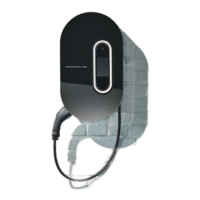
Do you have a question about the Porsche Mobile Charger Connect and is the answer not in the manual?
| Power Output | up to 22 kW |
|---|---|
| Cable Length | 7.5 m |
| Connectivity | Wi-Fi |
| Compatibility | Porsche electric and plug-in hybrid vehicles |
| Installation | Wall-mounted |
| Control | App-based control |
| Enclosure | IP54 |
| Mounting | Wall |
| Safety | Overcurrent, overvoltage protection |
| Input Voltage | 230V/400V |
| Input Current | up to 32A |
| Output Voltage | 230V/400V |
| Output Current | 32 A |
Critical safety instructions for operating the charger to prevent injury or damage.
Guidelines for proper grounding to reduce electric shock risk.
Specifies the intended purpose and conditions for using the charging equipment.
Step-by-step guide for mounting the wall bracket.
Instructions for installing the plug holder component.
Steps to insert the control unit into the installed wall mount.
Information on different vehicle charging connectors and cables.
Guidance on selecting the appropriate power cable for optimal charging.
Essential safety precautions for charging equipment use and installation.
Specifies requirements for power outlets to ensure safe and effective charging.
Guidelines for electrical line installation, including cable protection.
Safety measures for using the charger outdoors, especially regarding rain.
Instructions for safely changing supply and vehicle cables.
Steps for safely disconnecting the charging cables.
Guide to initial setup, language, country, and data transmission settings.
Information on automatic and manual software updates for the charger.
Steps for connecting the charger to a home network via WiFi or PLC.
Pairing the charger with your Porsche ID for enhanced features.
Instructions for connecting the charger to an energy manager.
Configuring PIN protection to prevent unauthorized vehicle access.
Steps to log into the charger using access data.
Initial setup steps required before using the Web Application.
General operating guidelines and country-specific notification requirements.
Important notes and safety warnings related to the charging process.
Detailed steps for initiating, pausing, and ending the charging process.
Explanation of ground monitoring and its importance.
Setting the maximum charging current based on installation.
Overview of common malfunctions and recommended troubleshooting steps.
Specifications related to power, voltage, current, and frequency.
Physical dimensions and weights of the charger and its components.